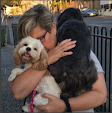 The decisions of the Children’s Book Council of Australia never fail to disappoint.
The decisions of the Children’s Book Council of Australia never fail to disappoint.Monday, August 18, 2008
Beastly decisison by Children's Book Council
 The decisions of the Children’s Book Council of Australia never fail to disappoint.
The decisions of the Children’s Book Council of Australia never fail to disappoint.Year after year the judges make decisions that are bewildering in their stupidity and even arrogance.
Year after year the body which has a charter “to engage the community with literature for young Australians” makes perplexing and confusing decisions that rate books that are important and worthy ahead of books that children will love to read.
But now, the council has outdone it self an moved beyond irritating and mystifying to mind-blowingly inappropriate and just downright wrong.
The winner of the Picture Book of the Year Requiem for a Beast by Matt Ottley contains not only violent images of a blood-stained axe used to kill Aboriginals but also the f word numerous times.
Since when did we reward phrases such as “íf you do it again you little black arsehole, your goin’t’be in the fuckin’ river” followed closely by “Jesus Christ he even pissed himself. You fuckin dirty little animal” in picture books.
Yes, Matt Ottley has a serious story to tell about the psychological problems in youth, suicide, the stolen generation and the plight of Aboriginal Australia. Yes, the judges make it clear that a picture book might not be for young children.
But there are other values which must be considered when evaluating this title and surely appropriate community standards is one of them.
This book contains no warning about language on its cover and no indication about its content – all that’s there now is a large gold sticker naming it as the Picture Book of the Year. Well-meaning parents will see that as a gold-plated endorsement of the book without any adequate warning.
Well they would see it as that if they find a bookshop that stocks it. Five attempts to buy the book from large retailers on the weekend failed. Four had never heard of it and a couple couldn't pronounce the title. One retailer believed it was in stock. He pulled out a step ladder, climbed up to the top shelf, removed two books from the front of the shelf and then found there were no copies left.
So a book hidden at the back of a top shelf is going to engage the community with literature for young people? Exactly how is that going to happen? Perhaps in much the same way as Windsor Smith sells shoes – create interest through controversy.
Here’s an alternative plan. What about creating interest by rewarding the books children like to read? The Children’s Book Council should try it for once. The novelty might surprise them.
Subscribe to:
Post Comments (Atom)

2 comments:
Years gone by when my children were smaller, I always went to the city department store where the winning books were on display and usually purchased a selection. I used to look for the gold sticker!
I get so sick and tired on how we are expected to lower our standards because some 'higher body' believes it be be OK.
Over the years I gave up writing complaints about such things, including TV advertisements, TV programs, video stores and even inappropriate music being played in stores.
Now I keep the remote in my hand and hit the off button when the content is not suitable for my children to see or even hear.
It is very sad that I have to do this in a society that keeps accepting the lowering of values.
What does the future hold for our children and grandchildren?
Gayle
Enjoyed reading your comments and I wonder if it is time again to look at who are the people on the Council? Should there not be industry representation, at least one author, an illustrator, a parent of each age group being judged, someone from a Uni who teaches Children’s Literature even and perhaps even someone who sells the product? I’d love to know what their criteria set is? What market research do they do with actual children? Is it possible for you with your media contacts to please identify for us mortals who “the Council” are, and how regularly they change their membership? How is membership chosen to this group? I’d like to know if it is true if the group are female teacher librarians on the main? I agree that this might mean they are perhaps readers and if currently working in schools with children may know of what popular culture and interests intrigues and delights. I heard at their conference one year how many books they had to read in a limited time to critique for the awards, but when asked what the criteria was there was no transparency or guidance. Teachers are expected to teach critical literacy skills to children (Prof Allan Luke’s Four Roles of the Reader) to help them assess what makes a great read, what the author wants them to feel, do once the text is read. Now the new curriculum will focus on enjoying literature again. Why can’t the Children's Book Council lead us with information about their choices?
Post a Comment